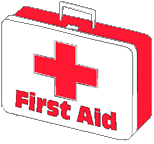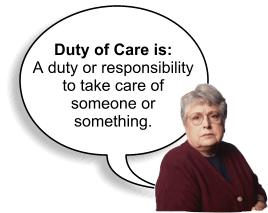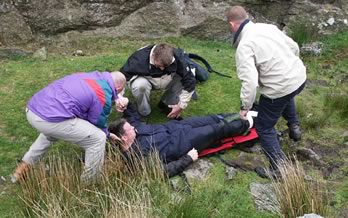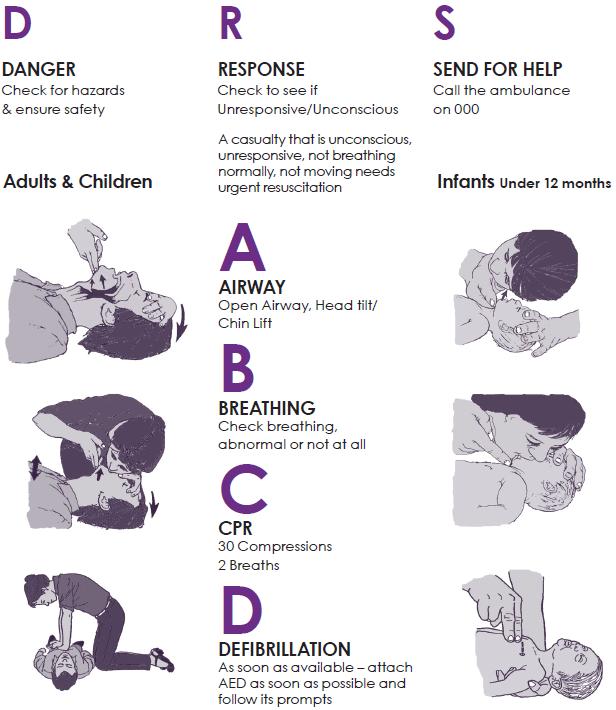Provide First Aid in Accordance with Established First Aid Principles
Principles of First Aid
First aid is the initial care and treatment given to the sick or wounded. First aid must start immediately and continue until medical assistance is available.
 The aims of first aid are to:
The aims of first aid are to:
- Preserve life
- Prevent deterioration of injury or illness
- Promote recovery
- Protect the unconscious
- Call for medical assistance
Duty of care (obligation)
"Duty of care" describes the legal duty owed by one person to another to act in a certain way. As a first aider, you have a duty of care towards your casualties to exercise reasonable care and skill in providing first aid treatment. This duty arises because you as a first aider have knowledge and skills which are relevant to certain medical emergency situations.

If you choose to provide first aid assistance to someone, you have a duty of care to use your knowledge and skills in a responsible way.
The common law does not impose an automatic duty on first aiders to go to the aid of every casualty they come across. However, first aiders do have a duty to provide first aid assistance if they have voluntarily taken on that role.
Example,
A nominated first aid officer in a workplace owes a duty of care to assist another person in that workplace if they become sick or injured.
Legislation can also impose a duty of care. For instance, legislation in some States says staff in child care centres must provide medical aid to a child who becomes ill or is injured. In the Northern Territory, the Criminal Code makes it a criminal offence, for a person who is able to do so, to 'callously fail' to provide first aid to a person who is in urgent need and whose life may be endangered. The penalty is up to seven years imprisonment.
Once you start first aid treatment of a casualty you take on a duty of care to provide first aid with reasonable skill and care and ensure your actions do not increase the risk to the casualty.
Once you commence the first aid of a person you must continue to provide first aid, until:
- The scene becomes unsafe
- Another trained first aider arrives and takes over
- Qualified (Ambulance/Doctor) help arrives and takes over
- The casualty shows signs of recovery
- You become physically unable to continue
Immediate action
Taking immediate action is the essential principle in first aid. Bystanders or relatives may not recognise the basic symptoms of an injury or illness and may wait hours before calling for help. Often people are worried about "doing the wrong thing", so don't attempt any first aid at all. If a person is sick or injured, then they need help and they need it immediately.
A casualty who is not breathing effectively or is bleeding heavily, requires immediate assistance.

Prompt effective first aid gives the casualty a much better chance of a good recovery.
It is important that prompt action does not lead to panic and the first aider should form a plan of action.
Careful and deliberate action undertaken without too much delay is most beneficial to the casualty. Try to remain calm and think your actions through. A calm and controlled first aider will give everyone confidence the event is being handled efficiently and effectively.
Each emergency is different, so it is impossible to provide you with a precise list of things you need to do for every emergency. However, if you follow the 'principles of first aid' as outlined, you should deliver appropriate care, even if you are not sure of what the underlying problem is.
When you attend an emergency situation it is important that you conduct a Primary Survey upon your approach. This is regardless of the situation. Using a methodical approach based on the priorities of first aid will establish the safety of all concerned and assist in giving the correct treatment to the casualty. The use of the mnemonic DRSABCD, this will assist in the primary survey.
See diagram below re; DRSABCD

Danger (hazards, risks, safety)
Once an emergency has occurred you need to ensure the safety of all those at the scene by checking for hazards. Check for any risk to:
- Yourself
- Bystanders
- Casualties
Take the time to conduct a primary survey of the scene to look for anything that may threaten the safety of those on or around the scene. Hazards that may be present include:
- Biohazards
- Fallen power lines
- Bombs
- Falling masonry
- Chemicals
- Flammable material
- Electricity
- On-coming traffic
- Fire/Smoke
- Risk of explosion
- Fumes/Gases
- Sharp metal edges
- Slippery surfaces
- Unstable structures
Leave dangerous situations to the emergency personnel who have the training and equipment to manage the situation. Risking your own safety in a dangerous situation may increase the number of casualties to manage.
Other situations may permit the removal of the hazard or the removal of the casualty from the hazard. Examples of removing a hazard would be cleaning away broken glass at a motor vehicle accident scene or turning electricity off at the main power board in an electrocution incident.
As a general rule you should avoid moving casualties unless there is a hazard that you cannot remove, such as fire or poisonous fumes. Moving a casualty, especially an unconscious casualty, is very difficult and should be left to ambulance personnel who have the training and equipment necessary to protect themselves and the casualty.
If it is essential to move a casualty before an ambulance arrives, take extreme care and use good manual handling practice. Provided they are not at further risk, you should check casualties in the position in which you find them.
In the event you are unable to check a casualty in the position they are in, gently roll them onto their back, supporting the head and neck during movement.